The project’s potential impact extends far beyond sporting excellence, with projections indicating it could generate 92,000 new jobs and more than 17,000 new homes while attracting an additional 1.8 million visitors each year. These figures underscore the transformative scale of what may become one of Britain’s most significant urban development projects in recent decades.
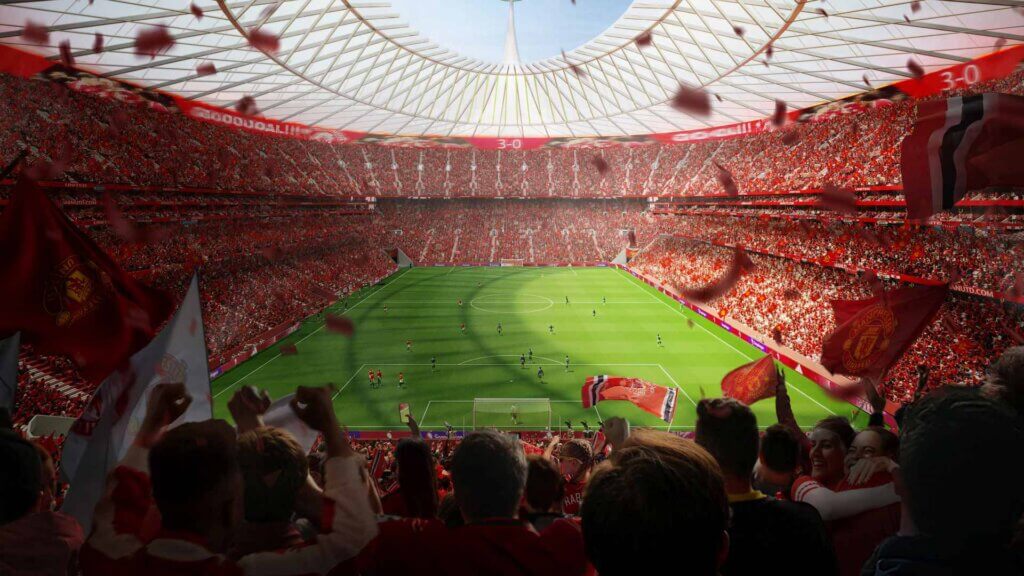
Foster + Partners, the renowned architecture group commissioned to design the stadium district, unveiled conceptual images and scaled models on Tuesday. These visuals will guide the detailed feasibility studies, consultation processes, and planning work as the project advances to its next phase.
A legacy reimagined for the modern era
Sir Jim Ratcliffe, co-owner of Manchester United, described the announcement as “the start of an incredibly exciting journey” towards creating what he envisions as “the world’s greatest football stadium.” While acknowledging the historic significance of the current venue, which has served the club for 115 years, he noted its facilities have fallen behind contemporary standards for world-class sporting arenas.
“By building next to the existing site, we will be able to preserve the essence of Old Trafford, while creating a truly state-of-the-art stadium that transforms the fan experience, only footsteps from our historic home,” Ratcliffe explained.
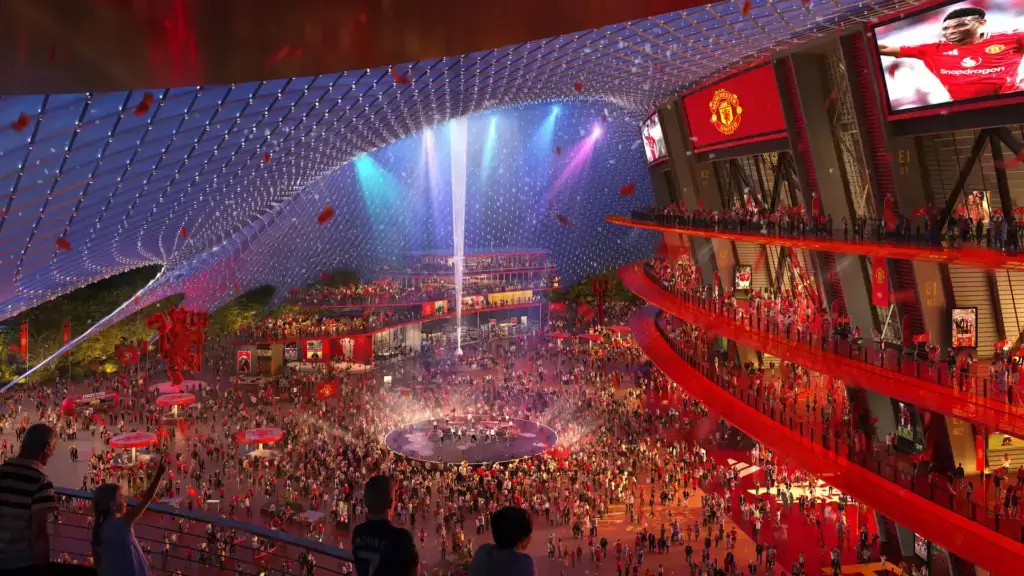
The strategic location maintains the club’s deep connection to its roots while enabling a complete reimagining of what a modern football stadium can offer. The careful balance between heritage and innovation addresses both the emotional attachment to the historic grounds and the practical need for advanced facilities.
Economic catalyst for regional development
The project extends well beyond sporting ambitions to become a driver of economic renewal. Ratcliffe highlighted this dual purpose, noting that “a new stadium can be the catalyst for social and economic renewal of the Old Trafford area, creating jobs and investment” both during construction and long after completion.
This aspect of the development aligns with governmental priorities for infrastructure investment, particularly in northern England. The project represents private sector participation in addressing regional economic disparities, with Ratcliffe emphasising the national significance of the undertaking.
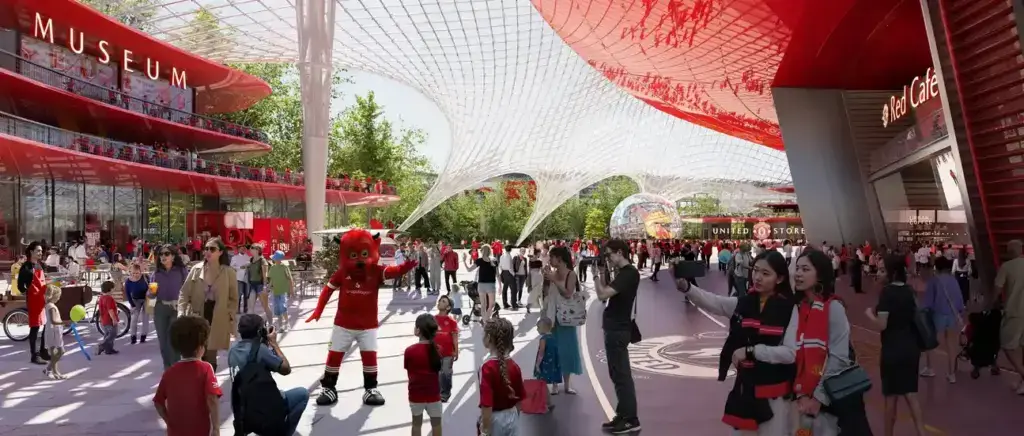
Omar Berrada, chief executive of Manchester United, outlined the club’s ultimate goal: “Our long-term objective as a club is to have the world’s best football team playing in the world’s best stadium.” He confirmed that extensive feasibility studies by the Old Trafford Regeneration Task Force had led to the conclusion that building a new facility was preferable to renovating the existing structure.
Support from sporting legends and design visionaries
The project has garnered enthusiastic support from key figures associated with the club. Sir Alex Ferguson, the most successful manager in English football history, offered his endorsement: “Manchester United should always strive for the best in everything it does, on and off the pitch, and that includes the stadium we play in.”
Ferguson acknowledged the sentimental attachment to the current venue but encouraged a forward-looking approach: “Old Trafford holds so many special memories for me personally, but we must be brave and seize this opportunity to build a new home, fit for the future, where new history can be made.”
Lord Norman Foster, whose architectural firm is leading the design process, described it as “one of the most exciting projects in the world today.” His vision prioritises the fan experience while incorporating sustainable elements such as energy harvesting and rainwater collection.
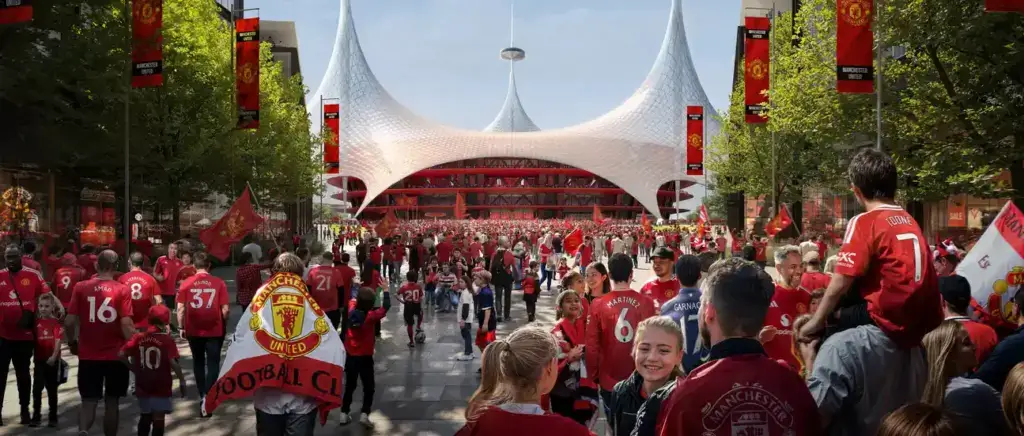
The stadium concept features a public plaza twice the size of Trafalgar Square, sheltered by a vast umbrella structure. Foster characterised the broader development as “a mixed-use miniature city of the future – driving a new wave of growth and creating a global destination that Mancunians can be proud of.”
Olympic-scale ambitions for urban regeneration
Lord Sebastian Coe, who chaired the Old Trafford Regeneration Task Force, compared the project’s potential impact to that of the 2012 London Olympics, which catalysed significant urban renewal in East London. With the exploratory phase now complete, responsibility shifts to Manchester United for stadium delivery and to the Mayoral Development Corporation for advancing the wider regeneration agenda.
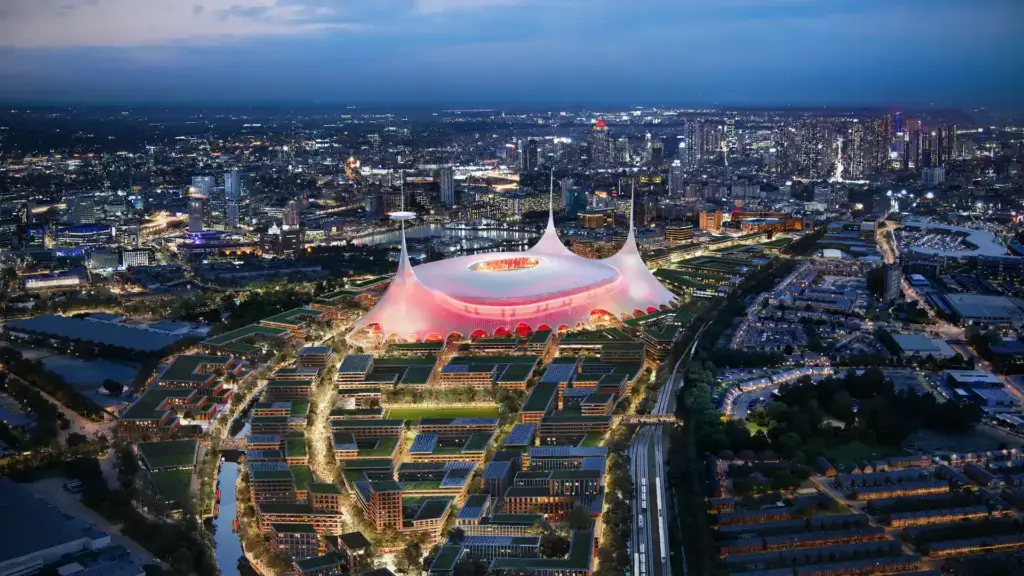
Andy Burnham, mayor of Greater Manchester, expressed similar confidence in the project’s transformative potential: “If we get this right, the regeneration impact could be bigger and better than London 2012.” He emphasised the importance of creating a stadium true to club traditions while setting new global standards, suggesting the benefits would extend throughout the region and beyond.
The carefully balanced focus on sporting excellence, economic development, and community enhancement positions this project as a potential model for how major sporting venues can serve as anchors for broader urban regeneration initiatives. With stakeholder consultation continuing, the vision for a transformed Old Trafford district now moves towards realisation.


